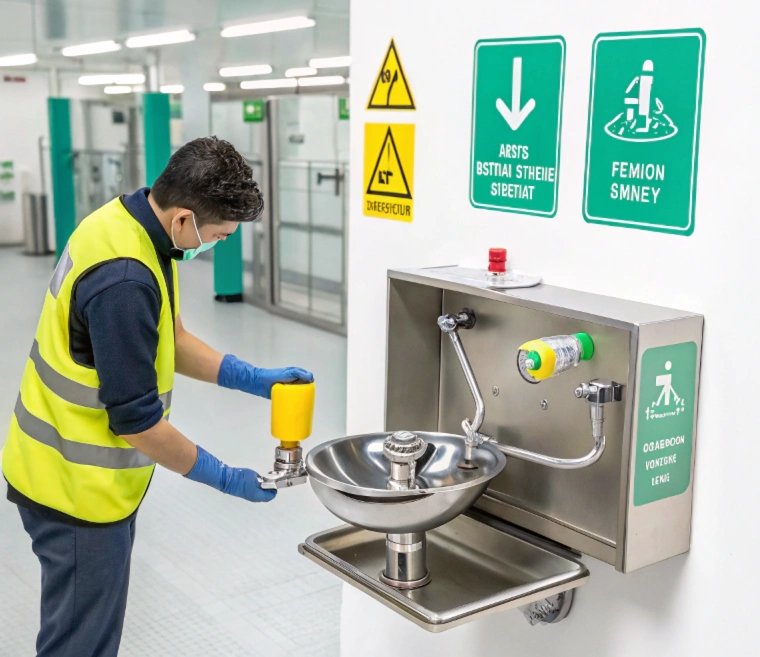Table of Contents
Eyewash stations play a crucial role in workplace safety by providing immediate relief in case of chemical splashes, debris, or other contaminants entering the eye. Regular inspection and maintenance of eyewash stations are essential to ensure they are functional and ready to use in an emergency. Here’s everything you need to know about how often eyewash stations should be checked and the steps involved in their maintenance.
Why Regular Eyewash Station Checks Are Essential
Eyewash stations need to be functional at all times, as even a brief failure could lead to serious injury in case of an emergency. Regular inspections help to:
- Ensure that water or solution flow meets safety standards.
- Confirm that the station is easily accessible and free from obstructions.
- Prevent contamination buildup that could harm the user’s eyes.
How Often Should Eyewash Stations Be Checked?
Weekly Activation Check
OSHA (Occupational Safety and Health Administration) and ANSI (American National Standards Institute) standards require that plumbed eyewash stations be activated weekly. This check is to ensure:
- Proper water flow and pressure.
- No obstructions or buildup in the nozzles.
- The water is free from contaminants.
During the weekly check, activate the station to verify that it runs smoothly and flush out any stagnant water that may contain contaminants.
Monthly Full Inspection
A more thorough inspection should be performed at least once a month. This includes:
- Checking the water temperature, which should be tepid (lukewarm) as per ANSI Z358.1 standards.
- Inspecting for leaks, rust, or signs of wear.
- Ensuring the activation handle or push lever functions correctly.
This monthly inspection confirms that the eyewash station is in optimal condition for emergencies.
Annual Maintenance and Compliance Check
At least once a year, conduct a full maintenance inspection to ensure compliance with OSHA and ANSI standards. This includes:
- A complete flush and cleaning of the system.
- Testing water flow rate to ensure it meets the minimum requirement of 0.4 gallons per minute.
- Ensuring visibility of the station’s signage and access pathway.
Annual checks may also involve calibration by a safety professional to ensure that all aspects of the station are in working order.
Best Practices for Eyewash Station Checks
- Keep Records: Document each inspection date, the name of the person who conducted it, and any observations. This log will serve as proof of compliance and help track maintenance needs.
- Train Staff: Regularly train employees on the proper use of eyewash stations and encourage them to report any issues.
- Maintain Clear Access: Keep the area around the eyewash station clear of any obstacles. In an emergency, quick access is vital.
Potential Issues Identified During Inspections
Frequent checks can reveal potential problems such as:
- Blocked Nozzles due to dust, debris, or water scale buildup.
- Inconsistent Water Pressure that might prevent adequate rinsing.
- Temperature Issues where water is too hot or too cold, which could deter people from using the eyewash station correctly.
Regular inspections help catch these issues before they become significant problems in an emergency.
When to Check Portable Eyewash Stations
Portable eyewash stations that use a saline solution or other rinsing fluids should also be checked weekly to ensure they are filled and functional. Replace the fluid as required, typically every three to six months, to maintain effectiveness.
Regular inspection and maintenance of eyewash stations help create a safer work environment and ensure compliance with health and safety standards. By following the outlined schedule, you’ll be ready for emergencies and provide reliable eye protection for everyone in your workspace.




